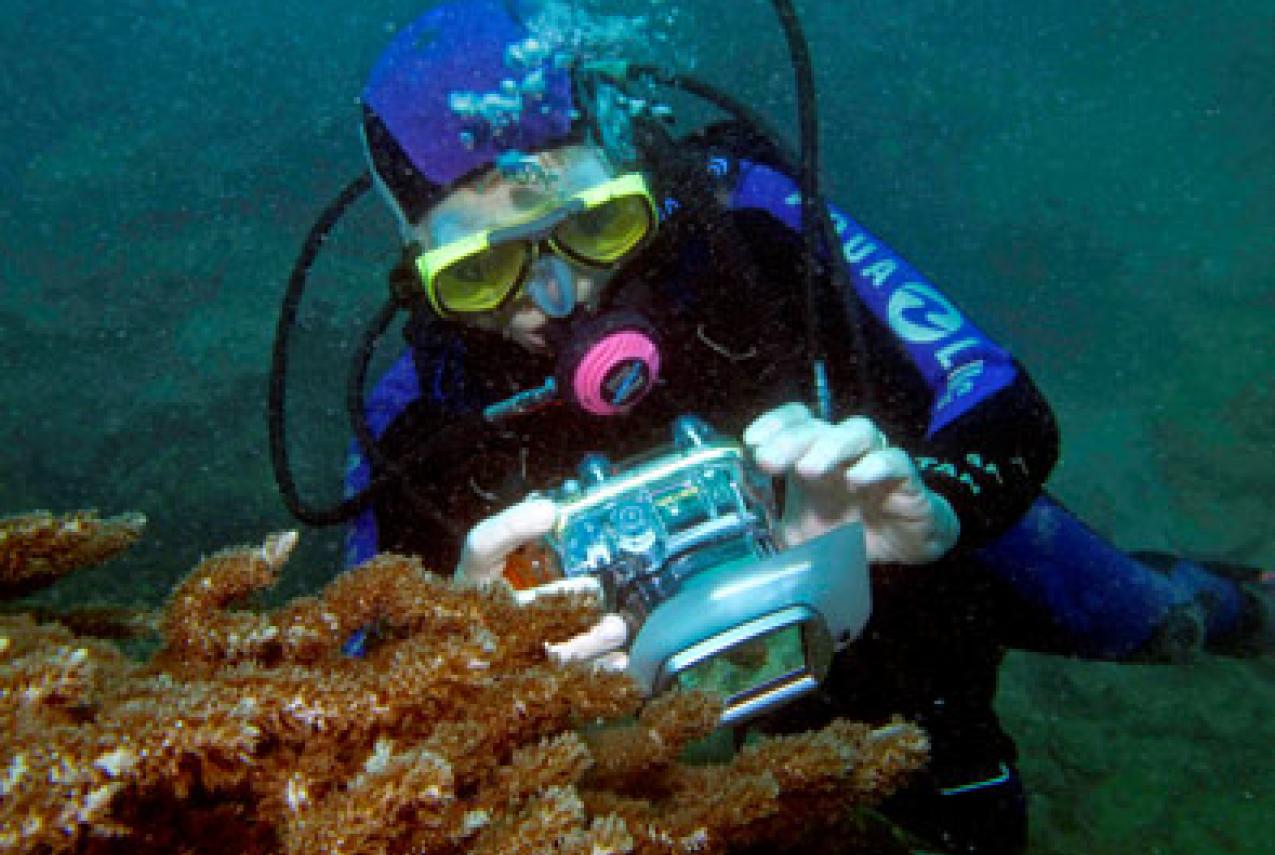From today, the Western Australian Museum’s world-wide online audience will be able to follow the discoveries of its scientists and their colleagues as they work in remote locations such as the Kimberley.
The first footage from a new research project along the Kimberley coast is about to go up on the WA Museum’s website this morning.
The technology also enables ‘in the field’ documentaries to be created about the new research in a matter of hours after any significant research findings.
WA Museum CEO Alec Coles said the project would bring little known aspects of scientific fieldwork within reach of anyone with a computer.
“The remote field streaming project involves a satellite dish being set up on Cassin Island off the Kimberley coast which will beam back footage to the website,” Mr Coles said.
“A team of scientists from a number of Australian museums are now in this remote part of the State to begin the next stage of an ongoing partnership with Woodside Energy that has been documenting the region’s marine biodiversity for some years now.
“Normally this sort of fieldwork is inaccessible to the public and we have to wait until the scientists return to tell people about their findings.”
A team member will film the work on the boats and, once a day, returning to Cassin Island to upload it to the web through the satellite link.
The Woodside Four project will continue until October 28 and the daily updates will document its progress.
flowplayer("player", "/sites/all/libraries/flowplayer3/flowplayer-3.2.2.swf", { // here is our playlist with two clips playlist: [ // this first PNG clip works as a splash image { url: '/sites/default/files/imagecache/video-placeholder-image/kimberley-screen-01.jpg', scaling: 'orig' }, // second clip is a video. when autoPlay is set to false the splash screen will be shown { url: '/sites/default/files/Sequence 1-Kimberley_Day_ 1-960.f4v', autoPlay: false, // video will be buffered when splash screen is visible autoBuffering: false } ]});
“This means the public will be able to see the team at work on the research vessel and see what they are finding, including new discoveries.” Mr Coles said.
The WA Museum is leading a team that includes scientists from the Queensland Museum, Australian Museum, the Museum and Art Gallery of the Northern Territory and the WA Herbarium.
Woodside Four follows on from previous fieldwork last October that looked at offshore atolls over two trips, using historical data provided by the Museums involved that dates back to 1976.
“The Kimberley one of the last frontiers on earth – it is truly exceptional by global standards: no-one would question the ecological importance of the Amazon rainforest and yet here in WA, just like in the Amazon, we are discovering new species every year,” Mr Coles said.
“Considering the increasing pressure this region is coming under from visitors and industry, it is vital that as much as possible is known about its biodiversity and ecosystems.”
Mr Coles said the achievements from the enduring partnership between Woodside and the WA Museum were impressive, with more than 6,700 marine species documented, 4,500 of which were now in the Museum's Woodside Collections and accessible to a global audience through the website.
“About 90 international scientists from 25 countries have been involved in this work and the remote field streaming project would now allow the Museum and its partners to share their findings and work with a much greater audience.”
To see the scientific team at work, visit: http://www.museum.wa.gov.au.
Media Contact: Caroline Lacy on (08) 92123860 or 0414 381761
